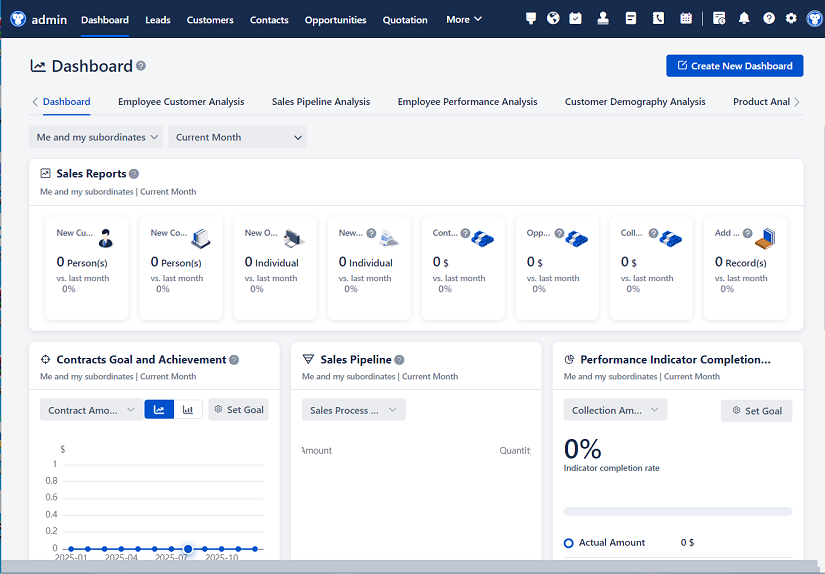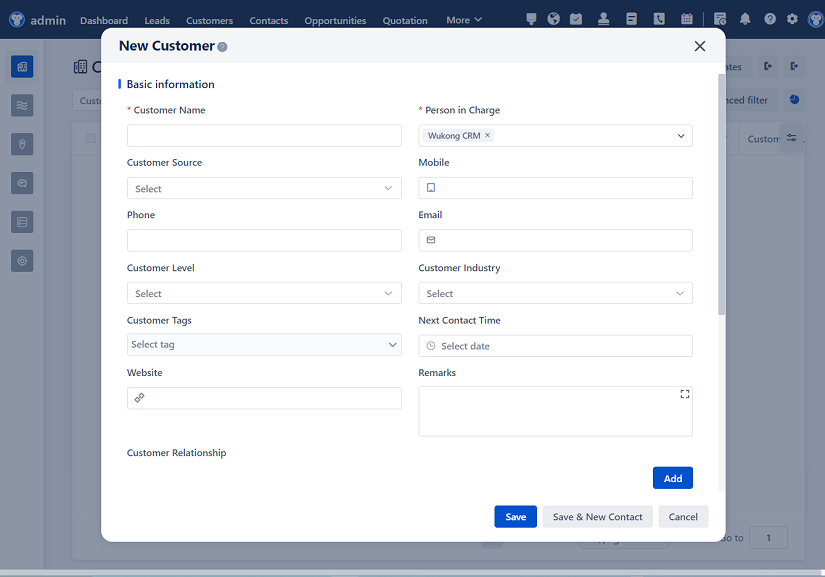
△Click on the top right corner to try Wukong CRM for free
Hey there! So, you're curious about CRM and how it all started, huh? Well, grab a cup of coffee or tea, and let's dive into this. I promise to keep it simple and fun, so you can understand the whole story in just three minutes. Ready? Let's go!
First things first, what is CRM anyway? Well, CRM stands for Customer Relationship Management. It’s like having a super-smart assistant that helps businesses keep track of their customers, their preferences, and their interactions. Imagine if you had a friend who could remember every little detail about your other friends—what they like, what they don’t, and even when their birthdays are. That’s kind of what CRM does, but for businesses.
Now, let’s talk about where it all began. The idea of managing customer relationships isn’t new. Even before we had fancy software, businesses were doing it the old-fashioned way—writing down notes, keeping files, and using their memory. But as businesses grew, and the number of customers increased, it became harder to keep up. That’s when people started thinking, “Hey, we need a better way to do this.”

In the 1980s, some smart folks came up with the first CRM-like systems. These were pretty basic, mostly just databases where you could store customer information. Think of it like a digital Rolodex. You know, those old-school spinning card files that people used to keep contact details. But these early systems were clunky and not very user-friendly. They were more like a tool for the IT department than something everyone in the company could use.
Then, in the 1990s, things really started to take off. The internet was becoming a big deal, and businesses were starting to see the potential of connecting with customers online. This is when companies like Siebel Systems and Oracle jumped in and developed more advanced CRM systems. These new systems weren’t just about storing data; they could also help with sales, marketing, and customer service. It was like having a Swiss Army knife for business, with all sorts of tools to help you manage your customers.
But here’s the thing: even though these systems were getting better, they were still pretty complicated. A lot of businesses found them hard to use, and they often required a ton of training. Plus, they were expensive. So, while they were great for big companies, smaller businesses were left out in the cold. It was like having a Ferrari when all you needed was a reliable sedan.
That’s when the cloud came along and changed everything. In the early 2000s, companies like Salesforce started offering CRM as a cloud-based service. This meant that instead of buying and installing software on your own computers, you could just log in to a website and start using it. It was like going from owning a car to using a ride-sharing app. No more maintenance, no more updates, and no more headaches. Plus, it was much more affordable, which made it accessible to small and medium-sized businesses too.
And that’s not all. As technology kept advancing, CRM systems got even smarter. They started integrating with other tools, like email, social media, and even AI. Now, you can get real-time insights, automate tasks, and even predict what your customers might want next. It’s like having a crystal ball that tells you exactly what your customers are thinking and feeling.
So, where are we now? Well, CRM has come a long way, and it’s become an essential part of how businesses operate. Whether you’re a small startup or a big corporation, having a good CRM system can make a huge difference. It helps you build stronger relationships with your customers, improve your sales, and even save time and money. And the best part? It’s only getting better. With new technologies like AI and machine learning, the future of CRM looks pretty exciting.

Alright, that’s the story of CRM in a nutshell. I hope you found it interesting and easy to follow. If you have any questions, feel free to ask. I’m here to help!
Q: What is CRM, and why is it important? A: CRM, or Customer Relationship Management, is a system that helps businesses manage their interactions with customers. It’s important because it helps you keep track of customer information, preferences, and interactions, which can lead to better customer satisfaction, improved sales, and more efficient operations.
Q: When did CRM systems first appear, and what were they like? A: The first CRM-like systems appeared in the 1980s. They were pretty basic, mostly just databases for storing customer information. Think of them as a digital Rolodex. They were useful but not very user-friendly and were mainly used by the IT department.
Q: How did the internet change CRM in the 1990s? A: The internet made it possible for businesses to connect with customers in new ways. Companies like Siebel Systems and Oracle developed more advanced CRM systems that could help with sales, marketing, and customer service. These systems were more powerful but still quite complex and expensive.
Q: What role did the cloud play in the evolution of CRM? A: The cloud made CRM more accessible and affordable. Companies like Salesforce started offering CRM as a cloud-based service, which meant businesses could log in to a website and start using it without needing to install software. This made it easier and more cost-effective, especially for small and medium-sized businesses.
Q: What are some of the latest advancements in CRM technology? A: The latest advancements include integration with other tools like email and social media, as well as the use of AI and machine learning. These technologies provide real-time insights, automate tasks, and even predict customer behavior, making CRM systems even more powerful and useful.
I hope these answers help! If you have more questions, just let me know.
Related links:
Free trial of CRM
Understand CRM system
AI CRM Systems

△Click on the top right corner to try Wukong CRM for free